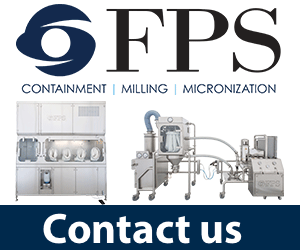When AST came to the table on the design for our new fill-finish isolator, one of the first areas AST engineers wanted to address was the usability and accessibility of the isolator and corresponding operations. With our customers’ point of view in mind, we wanted to address specific points of friction routinely encountered by operators and closely examine whether those friction points were necessary.
Does an isolator need to be ergonomically unfriendly to clean?
Should simple mechanisms like isolator doors be challenging to engage? (As much as one can appreciate exercise, no one wants to do “arm day” in cleanroom coveralls.)
Does routine maintenance have to be time-consuming and laborious?
Many of these factors are accepted as par for the course in fill-finish manufacturing. Our question was, why?
One of our key convictions here at AST is a dedication to continuous learning and improvement. We’re especially insistent about that on behalf of our customers. When considering the new isolator design, we immediately drew from the lessons we’d learned through those critical partnerships in providing aseptic solutions. The result was an innovative new isolator directly informed by our customers’ feedback and requests.
Our starting point became the practical considerations faced by fill-finish professionals; We wanted to see if we could answer the pain points encountered across the industry in a way that directly streamlined and simplified effective isolator protocols. Fill-finish operators face a unique set of challenges when approaching any aseptic processing solution. They have to account for the ergonomics of both operation and sanitation, the overall complexity of a system (including maintenance and how easily that system lends itself to training of additional operators), and the risk mitigation value inherent in any given system. Additionally, workspace constraints and how effectively a solution operates within a regulatory framework must also be factored in. In the world of sterility strategies, the smallest deviation can make all the difference. The stakes are high in any aseptic processing operation, and it’s the human operational element that must be both the most carefully mitigated and the most highly optimised.
Our aim was an isolator solution that wasn’t just notable in its effectiveness but in the way it was effective. And that started with user experience.
A Concise, Innovative AST Design
Our goal was to create an isolator that was clean and simple in appearance yet robust in design and function. That starts with an exterior that’s well-conceived and constructed. Materially, AST wanted something exceptionally durable and reliable, improving areas like tech housing where thicker, larger plates are utilised. The design prioritises clean, symmetrical lines with minimal gapping, a practical and aesthetic point of emphasis. Our isolator also features improved visibility with larger windows and narrower dividers that make it easier for operators to work around. The inside of the isolator was constructed to minimise seams and with double-panelled walls to protect and route wiring while offering a clear, clean production area.
Externally, AST engineers focused on a sleek, cleanable approach, avoiding bulky, hard-to- clean elements that can be common in other designs. The outside of the isolator avoids overly protruding features like hinged handles and external mechanisms. AST Isolator doors are outfitted with magnetically latched handles that are designed to be cleaned easily. Mousehole doors are completely removable and include no external mechanisms or tubing. This principle carries over to the inside of the isolator which offers a smooth interior, ample room for the operator to navigate and avoids hard to reach areas. Simply put, the easier an isolator is to clean, the lower the risk and the more productive an operation.
Removing Operational Obstacles
The next step was to address operational inefficiencies and provide features that would offer a substantial upgrade in day-to-day ease of use and set a new precedent in operational capabilities. Features like
- Accessible, side-hinge doors that are more operator-friendly and easier to open. Door hinges are fortified and constructed to avoid any drooping or rubbing. This design also reinforces risk management strategies as the side-opening doors do not block laminar airflow from the operator.
- Semi-automated HEPA filter changeout cuts down install time to minutes. Standard changing out of air filters is often time-involved, requiring at least two operators to set and establish a seal by manually tightening bolts. Filters are weighty, large and can be awkward to handle. It’s not uncommon for the filter to become damaged due to the difficult nature of the installation process. AST is introducing a new innovative approach that leverages custom-made bag-in bag-out filters with an automated sealing process. A single operator can simply set the filter in the corresponding grooves, and the seal will be initiated pneumatically once prompted through the HMI. Removal and installation can be executed in just over five minutes.
- We’ve made diffuser membrane placement and installation more efficient and easier to execute. Another semi-automated upgrade, diffuser membrane installation, is initiated by operators by placing a membrane in the corresponding brackets. Once there, magnetic clips support the air distribution membrane preventing it from falling, until the operator locks it into place through the HMI. This approach saves time and helps protect the fragile fabric, eliminating the manual use of tools.
- Smart glove ports, fortified by stainless steel, are designed for simple glove installation and removal with minimal risk of tearing. This solution will be coupled with glove testing capabilities, and all corresponding data will be available through the HMI. The user will never be in doubt about the quality of their gloves.
With these features, backed by a unifying, intuitive HMI, this isolator is proof that usability, effectiveness, and innovation can be integrated into a cohesive, user-friendly solution that saves time and prioritises sterility. Learn how AST can provide your organisation with the next generation of high-quality isolator technology – contact our experts today.




